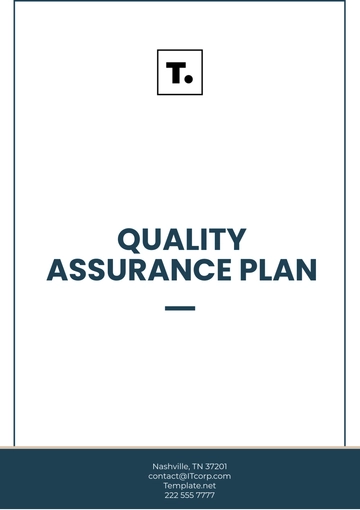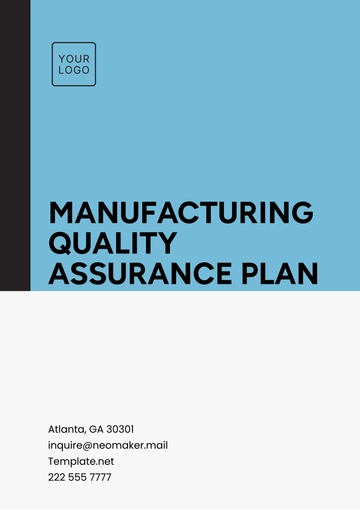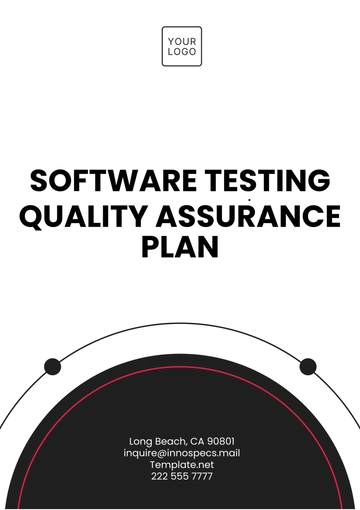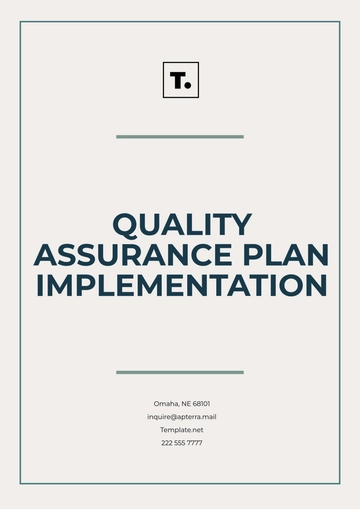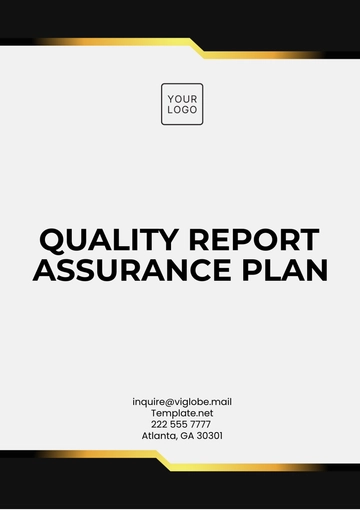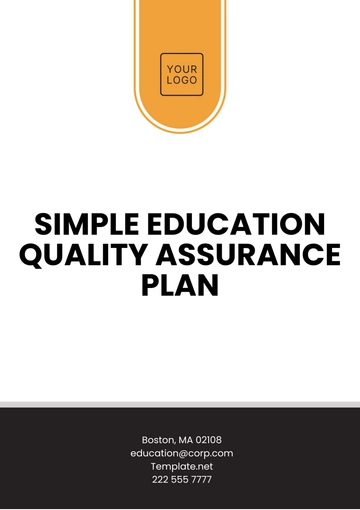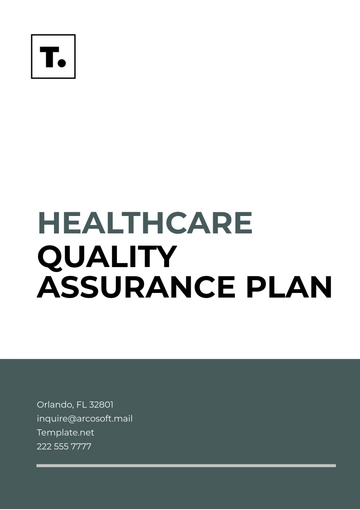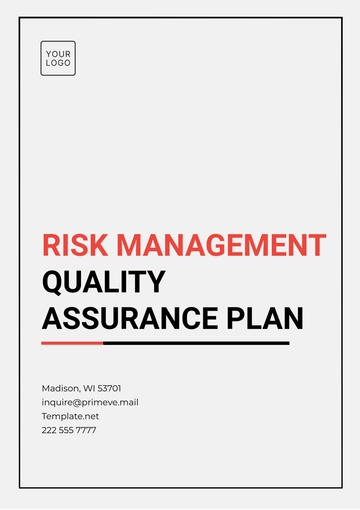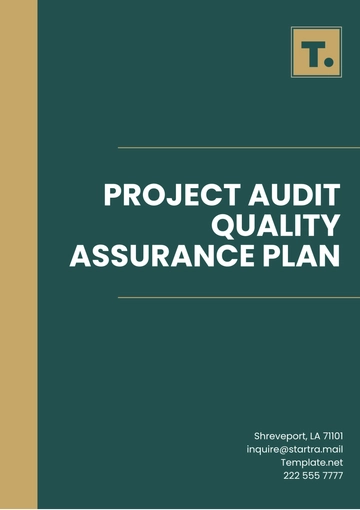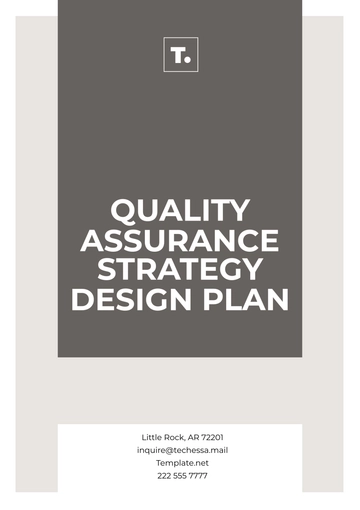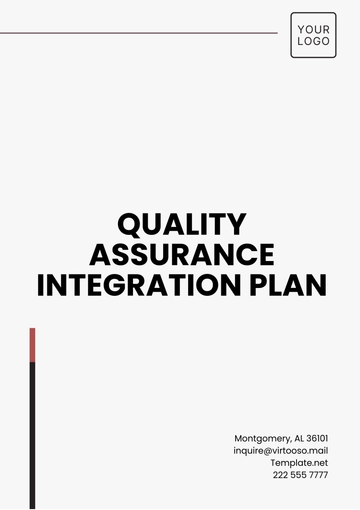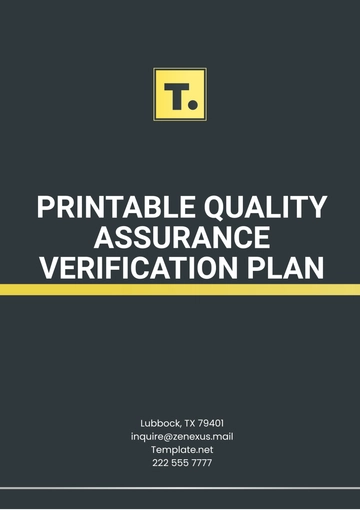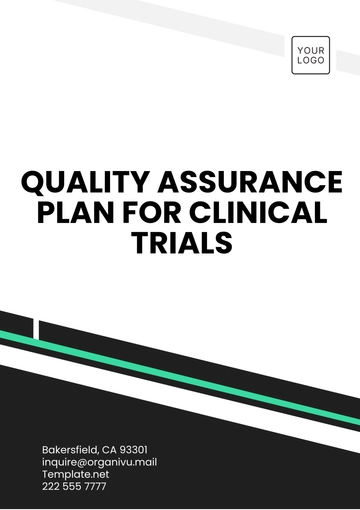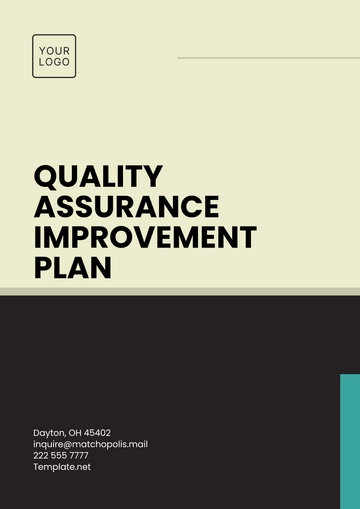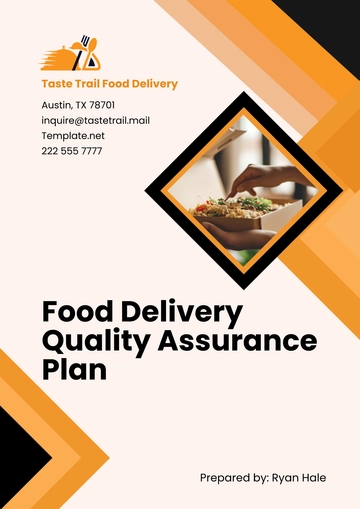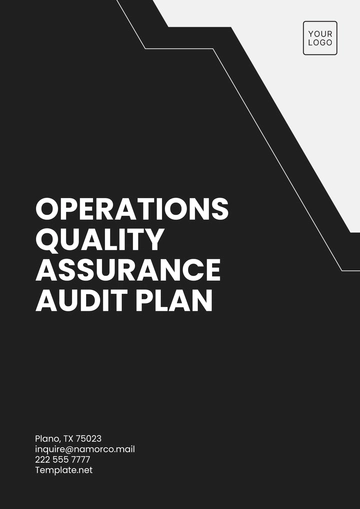ISO Quality Assurance Plan
1. Introduction
This ISO Quality Assurance Plan outlines the framework and procedures that [YOUR COMPANY NAME] will implement to ensure compliance with ISO 9001:2015 standards for quality management systems. The objective of this plan is to enhance customer satisfaction by delivering quality products and services that meet regulatory and customer requirements.
2. Scope
This plan applies to all departments within the organization involved in the production and delivery of products and services. It encompasses the following processes:
Product design and development
Manufacturing and service delivery
Quality control and assurance
Customer support and feedback
3. Quality Objectives
The following quality objectives will guide the organization in achieving its commitment to quality:
Achieve a customer satisfaction rating of at least 90%.
Reduce product/service defects to below 2% of total output.
Conduct regular training sessions for employees on quality management practices.
Improve response time to customer inquiries to less than 24 hours.
4. Roles and Responsibilities
Quality Assurance Manager: Responsible for overseeing the implementation and maintenance of the Quality Assurance Plan, conducting audits, and reporting to senior management.
Department Heads: Ensure compliance with quality standards within their respective departments and implement corrective actions as needed.
Employees: Adhere to quality procedures, participate in training, and report any quality issues to their supervisors.
5. Quality Management Processes
5.1 Document Control
Maintain all quality documentation, including procedures, forms, and records.
Ensure that all documents are reviewed and approved before distribution.
Regularly review and update documents to reflect current practices.
5.2 Process Control
Establish standardized operating procedures (SOPs) for critical processes.
Monitor key performance indicators (KPIs) to evaluate process effectiveness.
Implement corrective and preventive actions (CAPA) for identified issues.
5.3 Internal Audits
Conduct internal audits at least twice a year to assess compliance with the Quality Assurance Plan.
Document audit findings and track the implementation of corrective actions.
Review audit results with management to identify opportunities for improvement.
6. Training and Competence
Identify training needs related to quality management and product/service delivery.
Develop a training schedule and provide resources for employee development.
Evaluate the effectiveness of training programs through assessments and feedback.
7. Customer Feedback
Establish a customer feedback system to gather insights on product and service quality.
Analyze feedback to identify trends and areas for improvement.
Communicate findings to relevant departments for action.
8. Management Review
Conduct management review meetings at least annually to assess the effectiveness of the Quality Assurance Plan.
Evaluate progress toward quality objectives, review audit results, and discuss opportunities for improvement.
Adjust the Quality Assurance Plan as necessary based on management feedback and changing conditions.
9. Continuous Improvement
Foster a culture of continuous improvement by encouraging employee involvement in quality initiatives.
Utilize tools such as Plan-Do-Check-Act (PDCA) and Six Sigma to drive improvement efforts.
Share best practices and lessons learned across departments to enhance overall quality.
10. Conclusion
This ISO Quality Assurance Plan is a living document that will evolve as the organization grows and adapts to changes in the market and regulatory environment. By adhering to this plan, the organization commits to delivering high-quality products and services that meet customer expectations and enhance satisfaction.
Contact Information
For any inquiries regarding this Quality Assurance Plan, please contact:
Plan Templates @ Template.net

